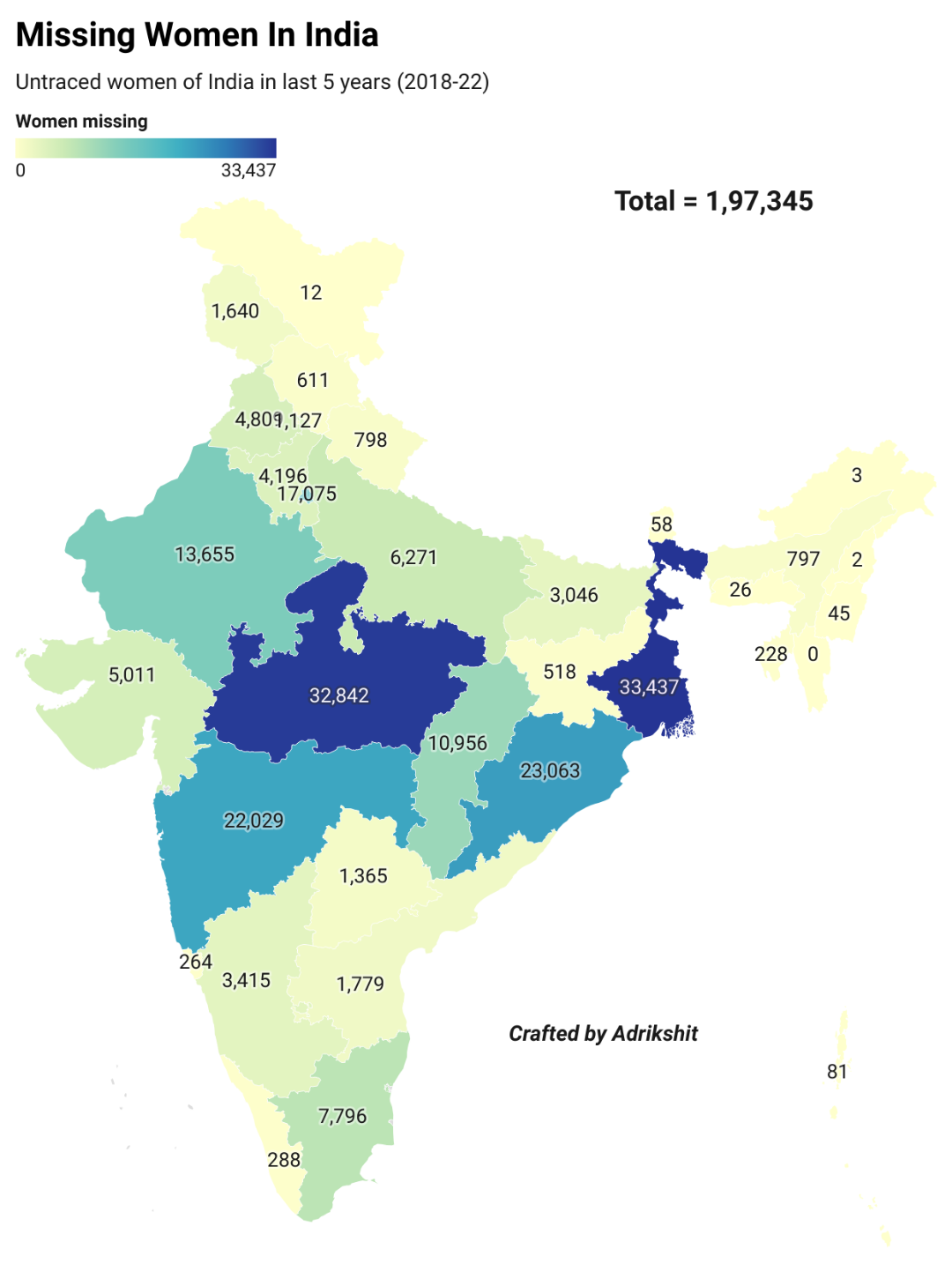Missing Women in India Map


Marcus Rodriguez
Historical Geography Expert
Marcus Rodriguez specializes in historical cartography and geographic data analysis. With a background in both history and geography, he brings unique...
Geographic Analysis
What This Map Shows
The "Missing Women in India Map" visualizes the unsettling reality of gender disparities within the nation, specifically focusing on women aged 18 and above who are considered missing. This map highlights the geographical distribution of missing women across various states and regions, providing a stark representation of how societal factors contribute to this alarming issue. By analyzing the data presented, we can begin to understand the broader context of gender inequity and societal challenges that lead to the phenomenon of missing women in India.
Deep Dive into Missing Women in India
The issue of missing women in India is deeply rooted in a complex web of social, economic, and cultural factors. According to recent statistics, India faces a significant gender imbalance, with an estimated 37 million women missing compared to men. This figure is attributed to various factors, including gender-based violence, trafficking, and societal neglect. Interestingly, regions with high rates of poverty often report a higher incidence of missing women, as economic instability can exacerbate gender inequality and lead to increased vulnerability.
Have you ever wondered why certain states report higher numbers of missing women? For instance, states like Uttar Pradesh and Bihar consistently show alarming statistics in this regard. Factors such as patriarchal norms, lack of education, and limited access to resources contribute to the challenges women face in these areas. The cultural preference for male children further adds to the issue, as families may resort to illegal means, including female infanticide or trafficking.
It's also crucial to consider the impact of migration. Many women move from rural areas to urban centers in search of employment opportunities. However, this migration often leaves them susceptible to exploitation and violence, leading to an increased number of missing cases. In metropolitan areas, where anonymity is more prevalent, many women fall victim to trafficking networks or domestic abuse, resulting in them disappearing from the social fabric entirely.
Furthermore, the lack of proper reporting and documentation exacerbates the problem. Many missing women cases go unreported due to social stigma, fear of reprisal, or a lack of trust in law enforcement. This creates a significant gap in data, making it challenging to devise effective solutions.
Regional Analysis
When we examine the map closely, regional disparities become evident. For example, while states in the northern part of India like Punjab and Haryana show lower rates of missing women compared to Uttar Pradesh, the underlying causes differ. In Punjab, the issue of gender imbalance is somewhat mitigated by better educational opportunities for women. Conversely, in Uttar Pradesh, socio-economic challenges and cultural attitudes towards women contribute to higher missing person reports.
Interestingly, the northeastern states of India present a different picture. States like Nagaland and Mizoram have lower instances of missing women, attributed to matrilineal societies where women hold significant power and status. This contrast highlights the importance of cultural context in understanding women's rights and safety in different regions of India.
Significance and Impact
The issue of missing women in India is not just a statistic; it represents a societal failure that has far-reaching implications. The disappearance of women affects families, communities, and the entire nation. It raises questions about women's rights, societal values, and the effectiveness of law enforcement in addressing gender-based violence.
Current trends suggest that awareness and advocacy are slowly changing societal attitudes. Organizations are working tirelessly to bring attention to this issue, pushing for legal reforms and better protection for women. However, there is still a long way to go. Projections indicate that without significant intervention, the number of missing women could continue to rise, further entrenching gender inequalities in the country.
In conclusion, the "Missing Women in India Map" serves as a crucial tool for understanding the gravity of this issue. By visualizing the data, we can engage in meaningful discussions and drive actions aimed at protecting women's rights and ensuring their safety in society. The responsibility lies with all of us to create an environment where every woman feels valued and safe, thus reducing the number of missing women in India.
Visualization Details
- Published
- August 19, 2025
- Views
- 116
Comments
Loading comments...